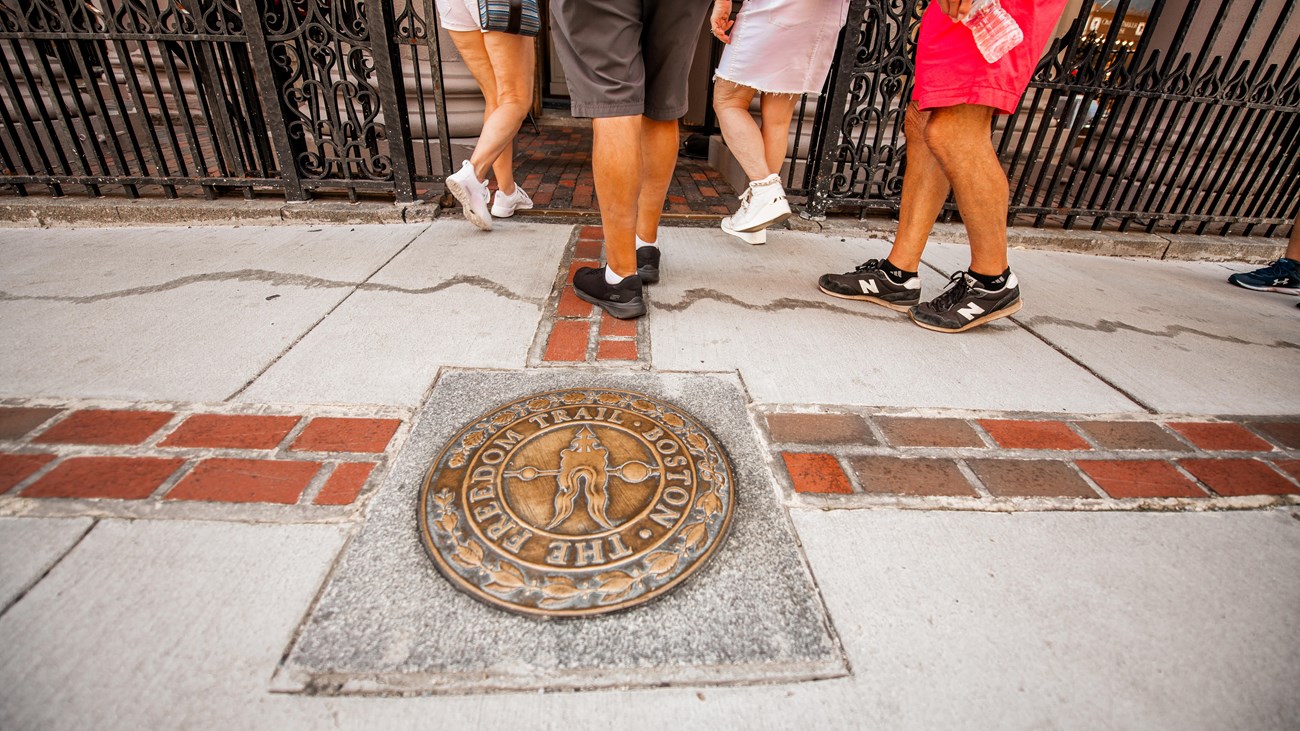Last updated: March 13, 2025
Thing to Do
Walk the Freedom Trail

Photo by Arlan Fonseca, Courtesy of National Parks of Boston
Originally conceptualized in the 1950s, the Freedom Trail® is an iconic symbol of Boston. Its red brick line snakes through some of the oldest parts of the City, navigating visitors to some of the most significant historic sites in the Downtown, North End, and Charlestown neighborhoods of Boston. The trail itself does not necessarily tell a narrative. Rather, it aids tourists with a starting point—an opening sampler of Boston's storied, complicated, and multi-faceted history. While many sites are primarily recognized for their role in the American Revolution, all the sites on the Freedom Trail® remained significant because of the role they played in subsequent social, political, and religious movements, controversies, and challenges.
Exploring Boston's History
Some choose to walk the entire 2.5 mile trail, end to end. Others select a handful of sites of particular interest and focus on those places. Visits can be as short as a few hours—however those who wish to enter every historic site and explore what each site has to offer can spend a full weekend along the Freedom Trail.
Guided tours are available seasonally from both National Park Service staff and through private organizations. Generally, few public tours walk the entire trail. Many sites are part of Boston National Historical Park, however they are independently owned and operated and may charge admission fees.
Free Self-Guided Audio Tour
The National Parks of Boston have developed a FREE Freedom Trail® Audio Tour for visitors. This tour is available online on our Freedom Trail® Audio Tour webpage, or by downloading the NPS App. Once downloaded, search "Boston National Historical Park" and select "self-guided tours."
Our Freedom Trail Audio Tour is also available in Spanish and French online and on the NPS App. Visit Freedom Trail Audio Tour - Español or Freedom Trail Audio Tour - Français to listen to the tours.
- Stairs to the 54th Massachusetts/Robert Gould Shaw Memorial: When in the Boston Common, head toward the Park Street MBTA station at the intersection of Park and Tremont Streets. Follow the sidewalk up Park Street toward Beacon Street.
- Stairs to enter the Granary Burying Ground can be bypassed by entering an at-grade entrance off Beacon Street. When at the main entrance at Tremont Street, continue down Tremont to the intersection with Beacon Street. Turn left to head up Beacon Street. The first alleyway to the left ends with an at-grade entrance to the Burying Ground.
- Old State House can only be entered via stairs.
- When following the trail from Paul Revere Park to the Old North Church, a detour around the block on Tileston Street is required.
- Copp's Hill is only accessible by stairs.
- USS Constitution and USS Cassin Young are historic ships with stairs, ladders, and gangways that move with the tide.
